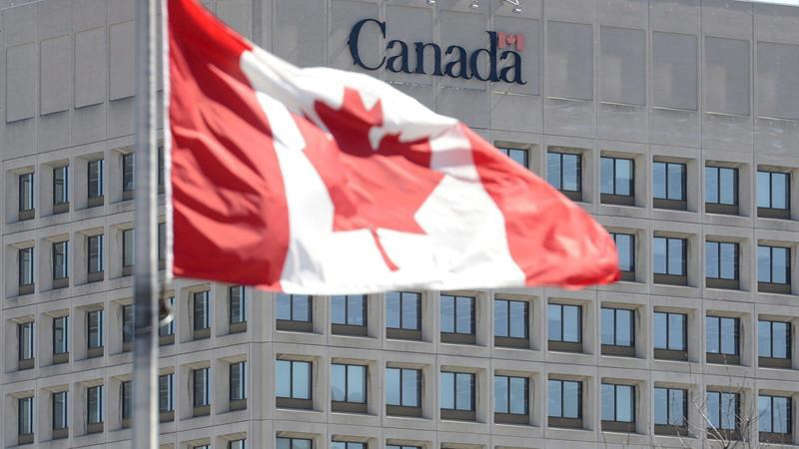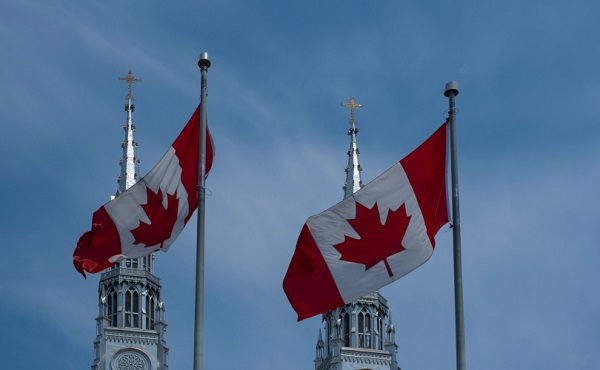Business
What an Effective All-of-Government Program Review Might Look Like

More than once in this space I’ve advocated for a comprehensive all-of-government review to find and eliminate waste and corruption. So it’s about time I set finger to keyboard and started mapping out how such a review might unfold.
Why is it just this moment in history that finds me so passionate about reviews?
Canada’s government spends more money than it receives. I know that’s hardly breaking news, but Ottawa’s reckless and frenzied race to max out every credit card in the known universe has driven the federal debt to $1.24 trillion. That’s 42.1 percent of GDP.¹
Among the biggest expenses? Employment growth in the federal civil service. Parliament employed 276,367 people in 2015 but by 2023 that had exploded to 370,368. That 94,001 increase amounts to a jump of 34 percent. For context, Canada’s overall population during that time increased by just 12 percent.
Given that the average weekly earnings for individuals employed in federal government public administration was $1,779 in 2023, just covering salaries for those extra 94,001 workers cost us $8.7 billion through that year.
But workers cost us much more than just their salaries. There are pension and CPP contributions, EI premiums, health and dental benefits, and indirect costs like office accommodations and training. All that could easily add another $50,000 per employee. Multiply that by all the new hires, and the total cost of those extra 94,001 workers has ballooned to $13.4 billion. That would be nearly a quarter of the deficit from the 2024 $61.9 billion fall update.² (Chrystia Freeland may not have been the one to officially announce that number, but she and her boss were the ones who got us there.)
Of course using a lottery to select, say, two out of every five bureaucrats for firing won’t give us the result we’re after. We want to improve government, not cripple it. (Although, to be completely honest, I find the idea of random mass firings way more attractive than I should.)
A successful review will identify programs that aren’t delivering cost-effective value to the people of Canada. Some of those programs will need changes and others should disappear altogether. For some, appropriate next-steps will come to light only through full audits.
But success will also require creating an organizational culture that earns the respect and buy-in of department insiders, stakeholders, and the general public.
The rest of this post will present some foundational principles that can make all that attainable. I should note that this post was greatly enhanced from input using the invaluable experience of a number of The Audit subscribers.
Use Transparent and Well-Defined Goals
Consensus should always be the ideal, but clarity is non-negotiable. Program advocates must be prepared to convincingly explain what they’re trying to achieve, including setting clear metrics for success and failure. Saving taxpayer funds to avoid economic catastrophe is obviously a primary goal. But more effective governance and more professional service delivery also rank pretty high.
Questions to ask and answer before, during, and after review operations:
- Does the program under review fall within the constitutional and operational scope of the federal government?
- Is there overlap with other programs or other levels of government?
- Are the original policy goals that inspired the program still relevant?
- Is the program in its current form the most effective and economical way of achieving those goals?
- Are the changes you’re proposing sustainable or will they sink back into the swamp and disappear as soon as no one’s looking?
Perhaps the most important goal of them all should be getting the job done in our lifetimes. We’ve all seen commissions, working groups, and subcommittees that drag on through multiple years and millions of dollars. You don’t want to make dumb mistakes, but that doesn’t mean you can’t adopt new tools or methodologies (like Agile) to speed things up.
Transparency is a fundamental requirement for public and institutional buy-in. That means publishing program goals and processes along with regular updates. It also means being responsive to reasonable requests for information. Fortunately, someone (Al Gore?) invented the internet, so it should be possible to throw together an interactive browser-based dashboard that keeps the rest of us in the loop and allows for feedback.
Over the years, I’ve personally built nice(ish) websites in minutes, even sites that use pipelines for dynamically pulling data from third-party sources. This isn’t rocket science – especially when you’re not dealing with sensitive private data.
Be Non-Partisan
Going to war against the complexity, toxic politics, incompetence, institutional inertia, NIMBY-ism, and sheer scope of government waste is not for the faint of heart. But setting yourself up as the Righteous Redeemer of only 40 percent of Canadians will make things infinitely more difficult.
Key project positions have to be filled by the most capable individuals from anywhere on the political spectrum. And proposals for cuts should rise above political gamesmanship. It may be unreasonable to expect friendly cross-the-aisle collaboration, but the value of the eventual results should be so self-evident that they’re impossible to oppose in good faith.
Frankly, if you’d ask me, any government that managed to miraculously rise above partisan silliness and genuinely put the country’s needs first would probably guarantee itself reelection for a generation.
Be Efficient
Don’t reinvent the wheel. If internal or external departmental audits already exist, then incorporate their findings. Similarly, make use of any existing best-practice policies, standards, and guidance from bodies like the Office of the Comptroller General and the Treasury Board of Canada Secretariat.
It’ll be important to know who really controls the levers of power within government. So make sure you’ve got members of key insider organizations like the Privy Council Office and the Committee of Senior Officials on speed dial.
Also, incorporate forward-thinking elements into new programs by including sunset clauses, real-time monitoring, and ongoing mini reviews. To keep things moving fast, implement promising auditing and analysis ideas early as pilot programs. If they work, great. Expand. If they don’t work, bury ‘em. No harm done.
AI-driven insights can probably speed up early steps of the review process. For instance, before you even book your first meeting with the dreaded Assistant Deputy Minister, feed the department’s program spending and outcomes data to an AI model and tell it to look for evidence-based inefficiencies and redundancy. The results can set the agenda for the conversation you eventually do have.
You can similarly build simple software models that search for optimal spending balances across the whole government. Complex multivariate calculations that once required weeks of hard math can now be done in seconds.
A friend who administrates a private high school recently tasked ChatGPT with calculating the optimal teaching calendar for the coming school year. After a few seconds, the perfect schedule showed up on-screen. The woman who, in previous years, had spent countless hours on the task, literally laughed with excitement. “What are you so happy about?” My friend asked. “This thing just took your job.”
Consult the Civil Service (and the public)
I know exactly what you’re thinking: is there a better way to destroy any process than burying it under endless rounds of public consultations (followed by years of report writing)? Trust me, I feel your pain.
But it’s 2025. Things can be different now. In fact, contrary to the way it might look to many good people inside the public sector, things can be a lot better.
This consultation would be 100 percent digital and its main stage need last no longer than 60 days. Here’s how it’ll go:
- Build a website, make a lot of noise to attract attention, and invite all Canadians – with a particular focus on current and former civil servants.
- Require login that includes a physical address and (perhaps) a government-issued ID. This will prevent interest groups from gaming the system.
- Use AI tools to identify boilerplate cut-and-paste submissions and flag them for reduced relevance.
- Encourage (but don’t require) participants to identify themselves by their background and employment to permit useful data segmentation. This will make it easier to identify expert submissions.
- Provide ongoing full public access to all submissions. Private information would be redacted, of course. And whistle blowers could have specialized, extra-secure access.
- Use traditional software analytics to flag especially interesting submissions and analyze all submissions using AI models to produce deeper summaries and analyses.
- Publish ongoing overviews of the results.
- [Other stuff…]
- Pick out a nice suit/dress for your Order of Canada investiture ceremony.
There’s absolutely nothing revolutionary about any of this (except the Order of Canada bit). The City of Toronto has been doing most of it for years.
Subscribe to The Audit.
For the full experience, upgrade your subscription.
Business
Conservative MPs denounce Liberal plan to strip charitable status of pro-life, Christian groups

From LifeSiteNews
Conservative MPs presented a petition in Parliament defending pro-life charities and religious organizations against a Liberal proposal to strip their charitable tax status.
Conservative MPs presented a petition calling for the rejection of the Liberals’ plan to strip pro-life charities and places of worship of their charitable status.
During the September 16 session, Conservative Members of Parliament (MPs) Andrew Lawton, Jacob Mantle, and Garnett Genuis defended pro-life charities and places of worship against Liberal recommendations to remove the institutions’ charitable status for tax purposes.
“I have received from houses of worship across this country so much concern, reflected in this petition, that these recommendations are fundamentally anti-free speech and anti-religious freedom,” Lawton told Parliament. “The petitioners, and I on their behalf, advocate for the complete protection of charitable status regardless of these ideological litmus tests.”
Similarly, Mantle, a newly elected MP, added that Canadians “lament that some members opposite are so blinded by their animus towards charitable organizations that they would seek to undermine the good works that these groups do for the most vulnerable Canadians.”
Religious charities provide care and compassion to the most vulnerable in our society, but some members of the Liberal and New Democratic parties are so blinded by their animus towards religion and faith that they are actively seeking to revoke the charitable status of ALL… pic.twitter.com/O12rkw3pJ0
— Jacob Mantle (@jacobmantle) September 16, 2025
Finally, Genuis, who officially presented the petition signed by hundreds of Canadians, stressed the importance work accomplished by religious and pro-life organizations.
“(R)eligious charities in Canada provide vital services for society, including food banks, care for seniors, newcomer support, youth programs and mental health outreach, all of which is rooted in their faith tradition, and that singling out or excluding faith charities from the charitable sector based on religious belief undermines the diversity and pluralism foundational to Canadian society,” he explained.
As LifeSiteNews previously reported, before last Christmas, a proposal by the all-party Finance Committee suggested legislation that could strip pro-life pregnancy centers and religious groups of their charitable status.
The legislation would amend the Income Tax Act and Income Tax. Section 429 of the proposed legislation recommends the government “no longer provide charitable status to anti-abortion organizations.”
The bill, according to the finance department, would require “registered charities that provide services, advice, or information in respect of the prevention, preservation, or termination of pregnancy (i.e., destroying the unborn)” to disclose that they “do not provide specific services, including abortions or birth control.”
Similarly, Recommendation 430 aims to “amend the Income Tax Act to provide a definition of a charity which would remove the privileged status of ‘advancement of religion’ as a charitable purpose.”
Many Canadians have warned that the proposed legislation would wipe out thousands of Christian churches and charities across Canada.
As LifeSiteNews reported in March, the Canadian Conference of Catholic Bishops (CCCB) appealed to the Liberal government to rethink the plan to strip pro-life and religious groups of their tax charity status, stressing the vital work done by those organizations.
Business
The Real Reason Tuition Keeps Going Up at Canada’s Universities

Since 2020, steep increases to tuition fees have triggered large-scale protests by the students who pay those fees at the University of Alberta, University of Calgary, University of British Columbia and at McGill University and Concordia University in Quebec, among many other schools. (A freeze on tuition fees in Ontario since 2019 explains that province’s absence from the list.)
It’s true that tuition has been on the rise. According to Statistics Canada , between 2006-2007 and 2024-2025, the average undergraduate full-year tuition fee at a Canadian university grew from approximately $4,900 to $7,360.
But do the students really know what’s behind the increases?
University administrators looking to deflect responsibility like to blame provincial government cutbacks to post-secondary funding. Here, the evidence is unconvincing. Going back two decades, nationwide full-time equivalent (FTE) student transfer payments from provincial governments have remained essentially constant, after accounting for inflation. While government grants have remained flat, tuition fees are up.
The issue, then, is where all this extra money is going – and whether it benefits students. Last year researcher and consultant Alex Usher took a close look at the budgeting preferences of universities on a nationwide basis. He found that between 2016-2017 and 2021-2022 the spending category of “Administration” – which comprises the non-teaching, bureaucratic operations of a university – grew by 15 percent. Curiously enough “Instruction,” the component of a university that most people would consider to be its core function, was among the slowest growing categories, at a mere 3 percent. This top-heavy tendency for universities is widely known as “administrative bloat”.
Administrative bloat has been a problem at Canadian universities for decades and the topic of much debate on campus. In 2001, for example, the average top-tier university in Canada spent $44 million (in 2019 dollars) on central administration. By 2019 this had more than doubled to $93 million, supporting Usher’s shorter-term observations. Usher calculated that the size of the non-academic cohort at universities has increased by between 85 percent and 170 percent over the past 20 years.
While some level of administration is obviously necessary to operate any post-secondary institution, the current scale and role of campus bureaucracies is fundamentally different from the experience of past decades. The ranks of university administration used to be filled largely with tenured professors who would return to teaching after a few terms of service. Today, the administrative ranks are largely comprised of a professional cadre of bureaucrats. (They are higher paid too; teaching faculty are currently paid about 10 percent less than non-academic personnel.)
This ever-larger administrative state is increasingly displacing the university’s core academic function. As law professor Todd Zywicki notes, “Even as the army of bureaucrats has grown like kudzu over traditional ivy walls, full-time faculty are increasingly being displaced by adjunct professors and other part-time professors who are taking on a greater share of teaching responsibilities than in the past.” While Zywicki is writing about the American experience, his observations hold equally well for Canada.
So while tuition fees keep going up, this doesn’t necessarily benefit the students paying those higher fees. American research shows spending on administration and student fees are not correlated with higher graduation rates. Canada’s huge multi-decade run-up in administrative expenditures is at best doing nothing and at worst harming our universities’ performance and reputations. Of Canada’s 15 leading research universities, 13 have fallen in the global Quality School rankings since 2010. It seems a troubling trend.
And no discussion of administrative bloat today can ignore the elephant in the corner: diversity, equity and inclusion (DEI). Writing in the National Post, Peter MacKinnon, past president of the University of Saskatchewan, draws a straight line from administrative bloat to the current infestation of DEI policies on Canadian campuses.
The same thing is going on at universities across Canada that have permanent DEI offices and bureaucracies, including at UBC, the University of Calgary, University of Waterloo, Western University, Dalhousie University and Thompson Rivers University. As a C2C Journal article explains, DEI offices and programs offer no meaningful benefit to student success or the broader university community. Rather, they damage a school’s reputation by shifting focus away from credible scientific pursuits to identity politics and victimology.
With universities apparently unable to restrain the growth of their administrative Leviathan, there may be little alternative but to impose discipline from the outside. This should begin with greater transparency.
Former university administrator William Doswell Smith highlights a “Golden Rule” for universities and other non-profit institutions: that fixed costs (such as central administration) must never be allowed to rise faster than variable costs (those related to the student population). As an example of what can happen when Smith’s Golden Rule is ignored, consider the fate of Laurentian University in Sudbury, Ontario.
In early 2021 Laurentian announced it was seeking bankruptcy protection under the Companies’ Creditors Arrangement Act, under which a court-appointed manager directs the operations of the delinquent organization. Laurentian then eliminated 76 academic programs, terminated 195 staff and faculty, and ended its relationships with three nearby schools.
Ontario’s Auditor-General Bonnie Lysak found that the primary cause of the school’s financial crisis were ill-considered capital investments. The administrators’ big dreams essentially bankrupted the university.
The lesson is clear: if universities refuse to correct the out-of-control growth of their administrations, then fiscal discipline will eventually be forced upon them. A reckoning is coming for these bloated, profligate schools. The solution to higher tuition is not increasing funding. It’s fewer administrators.
The original, full-length version of this article was recently published in C2C Journal.
Jonathan Barazzutti is an economics student at the University of Calgary. He was the winner of the 2nd Annual Patricia Trottier and Gwyn Morgan Student Essay Contest co-sponsored by C2C Journal.
-

 National2 days ago
National2 days agoChrystia Freeland resigns from Mark Carney’s cabinet, asked to become Ukraine envoy
-

 International2 days ago
International2 days agoFrance records more deaths than births for the first time in 80 years
-

 Business2 days ago
Business2 days agoOttawa’s so-called ‘Clean Fuel Standards’ cause more harm than good
-

 Business2 days ago
Business2 days agoThe Truth Is Buried Under Sechelt’s Unproven Graves
-

 Energy2 days ago
Energy2 days agoA Breathtaking About-Face From The IEA On Oil Investments
-

 Health1 day ago
Health1 day agoCanadians diagnosed with cancer in ER struggle to receive treatment as Liberals keep pushing MAiD
-

 Crime1 day ago
Crime1 day agoFBI says ‘a lot more’ than 20 people ‘may have known’ Charlie Kirk was going to be shot
-

 COVID-191 day ago
COVID-191 day agoFreedom Convoy leader slams Canadian gov’t agency for praising its treatment of protesters








